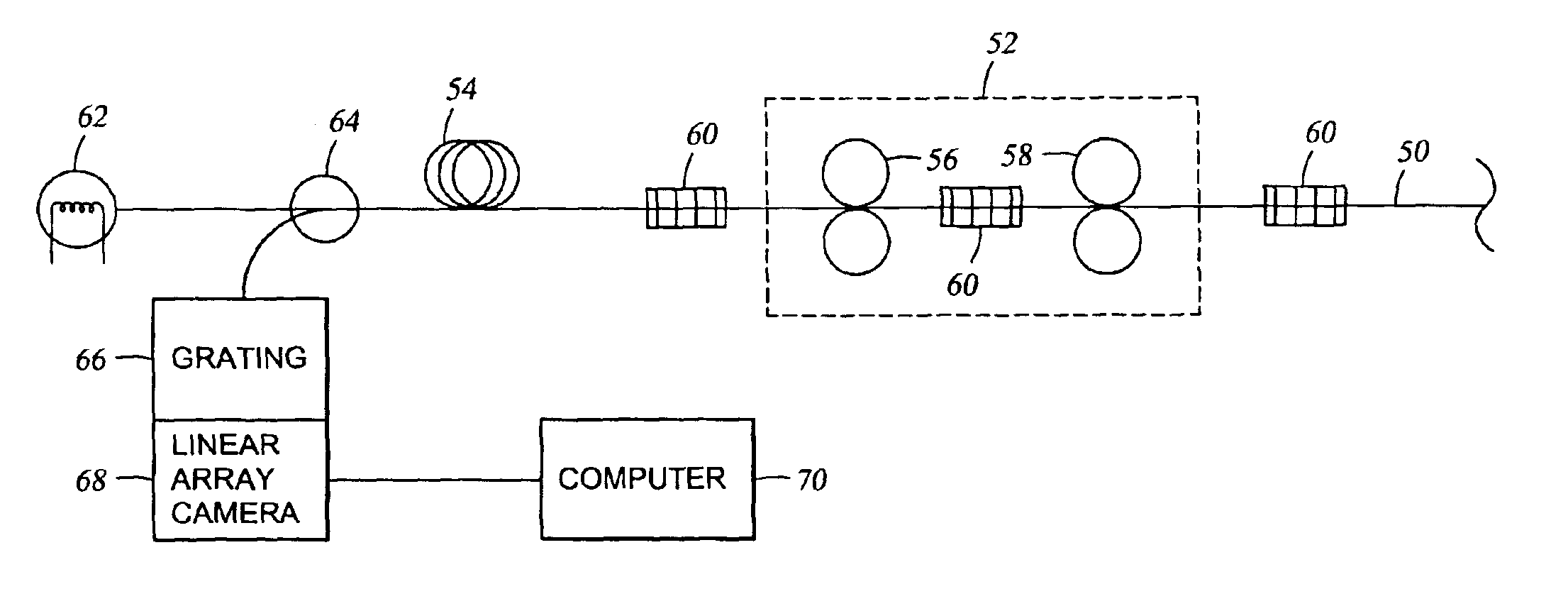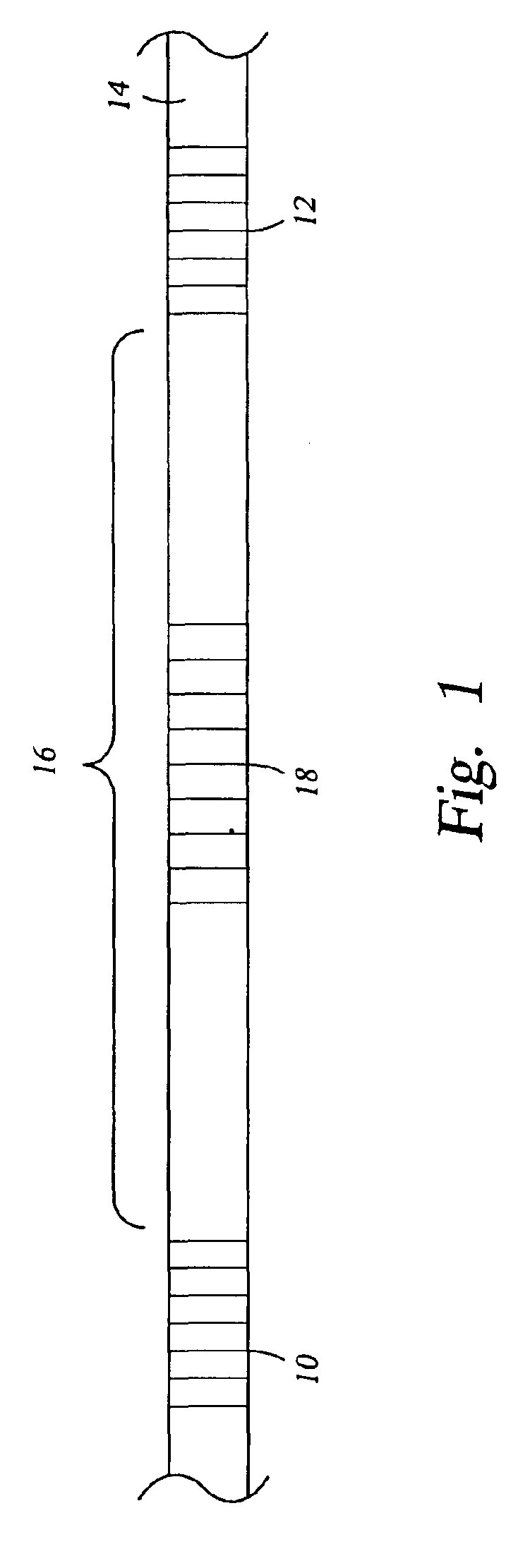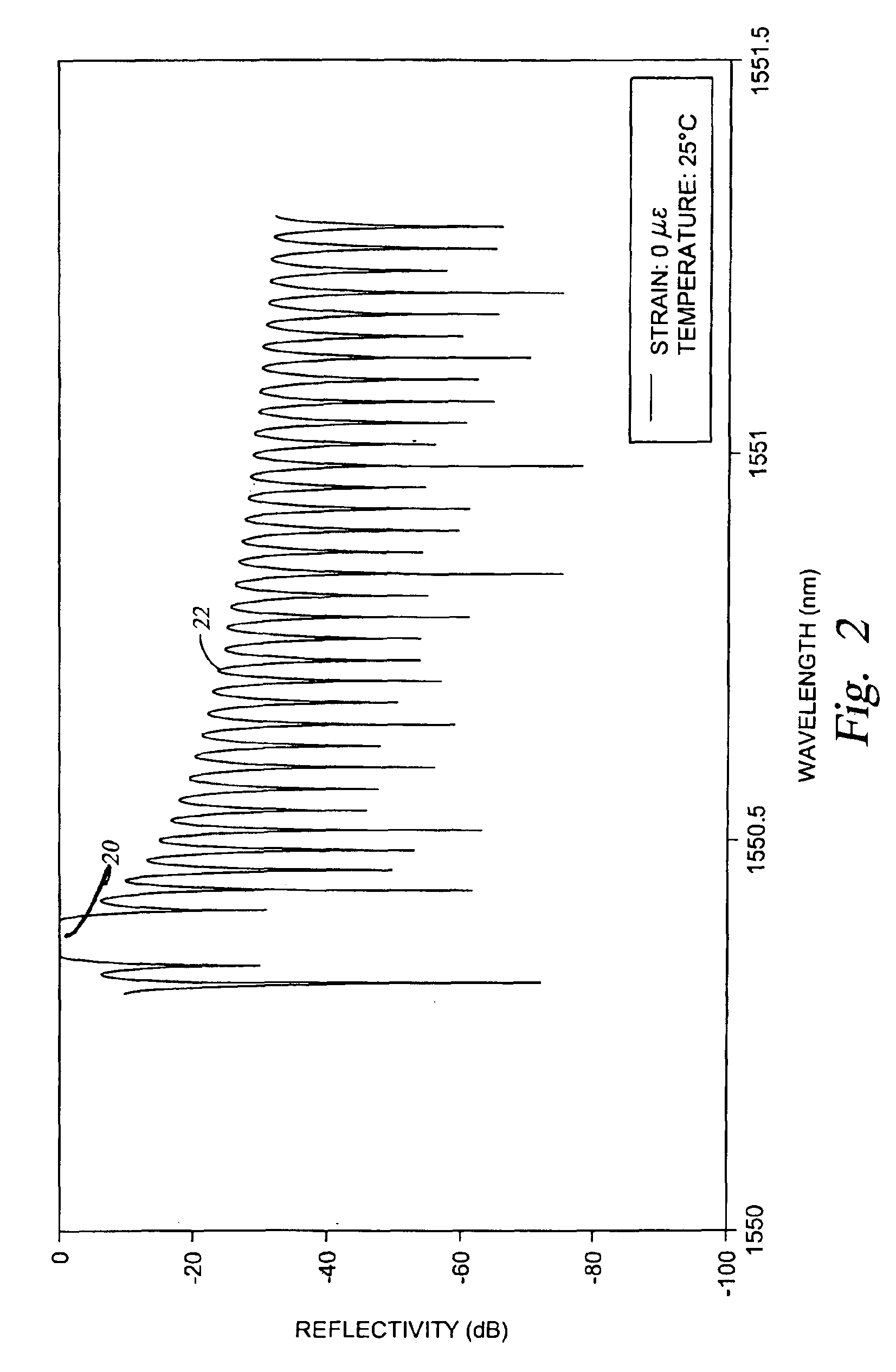Measurement of fiber strain during processing
a technology of fiber strain and processing, applied in the direction of force measurement by measuring optical property variation, instruments, optical elements, etc., can solve the problems of affecting the ultimate mechanical strength of the fiber, insufficient to induce sub-critical growth of preexisting flaws within the fiber, and reducing the reliability of the field fiber
- Summary
- Abstract
- Description
- Claims
- Application Information
AI Technical Summary
Benefits of technology
Problems solved by technology
Method used
Image
Examples
Embodiment Construction
[0021]Strain and temperature can be dynamically measured in a fiber being processed by an optical method in which two types of sensors are written into a fiber. A sensor as used here refers to a structure impressed into the fiber to form an axially extending optical structure that produces a wavelength dependent spectrum for optical reflection of light axially propagating along the fiber although the transmission mode may be used if desired. A pair of associated sensors of different types is called a hybrid sensor.
[0022]One such sensor is a fiber Bragg grating (FBG) consisting of a pattern of refractive index variations called lines formed transversely to the fiber axis on a fixed pitch. A large number of lines is sufficient to form a Bragg grating. When operated in first order, a Bragg grating will reflect light having a wavelength that is twice the pitch of the Bragg grating, taking into account the effective refractive index of the fiber.
[0023]Another such sensor is a Fabry-Perot...
PUM
| Property | Measurement | Unit |
|---|---|---|
| temperatures | aaaaa | aaaaa |
| lengths | aaaaa | aaaaa |
| lengths | aaaaa | aaaaa |
Abstract
Description
Claims
Application Information
 Login to View More
Login to View More - R&D
- Intellectual Property
- Life Sciences
- Materials
- Tech Scout
- Unparalleled Data Quality
- Higher Quality Content
- 60% Fewer Hallucinations
Browse by: Latest US Patents, China's latest patents, Technical Efficacy Thesaurus, Application Domain, Technology Topic, Popular Technical Reports.
© 2025 PatSnap. All rights reserved.Legal|Privacy policy|Modern Slavery Act Transparency Statement|Sitemap|About US| Contact US: help@patsnap.com



